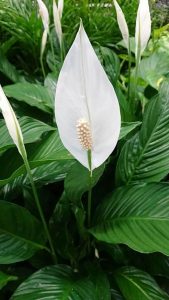Learn how to make the Peace Lily bloom and brighten your interior with its subtle touch of elegance, beauty and serenity!
If you’re a big fan of white flowers (bracts), peace lily must be on your bucket list. While indoor plants are hardy and thrive with little maintenance, flowering will grab most of your attention with uncertain results. That’s why we have this in-depth article to help you learn how to make peace lilies bloom!
What does a peace lily look like?
Peace lilies form small flowers on spikes protected by large white bracts – often mistaken for a single flower. The flowers aren’t very fancy, looking like extensions of stems with only pollen at the ends, but it’s the white flag-like bracts that make this houseplant so special.
The plant blooms naturally in spring and summer. In warm climates, they can bloom year-round, especially starting in winter.
What’s Stopping Your Peace Lily to Blooming?
Appropriate sunlight is the crucial point most gardeners miss out on. Your peace lilies need warmer temperatures of 60-86 degrees Fahrenheit (15-30 C) Produces perfect bracts. Higher temperatures will turn the leaves yellow, while lower temperatures will stunt their growth.
Another common mistake is overwatering. The plant prefers moist but well-drained soil. The trick is to maintain moisture without allowing the water to settle near the roots, which causes root rot. Keep feeling the top inch of soil using your finger and water accordingly.




